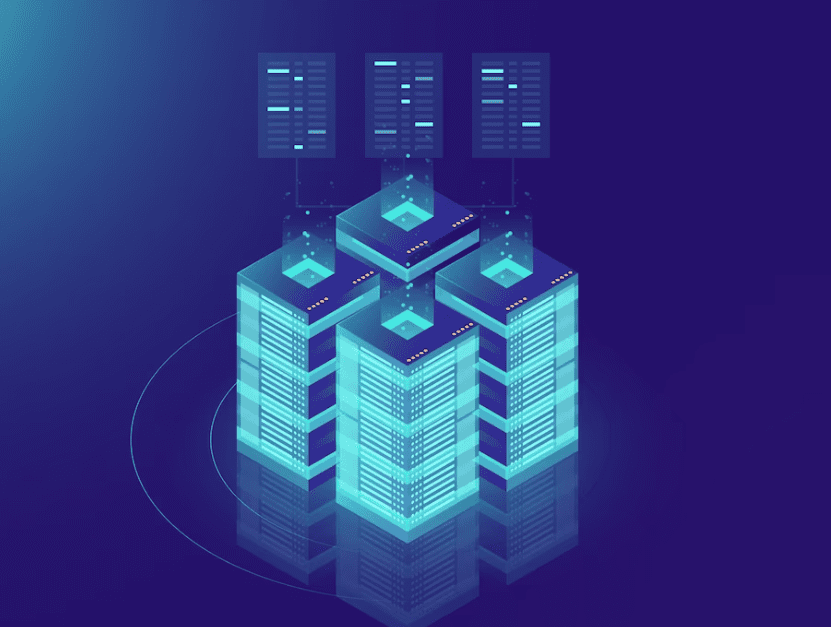Blockchain has emerged as a prominent technology narrative in the last few years. It appears to be a topic of conversation everywhere, although there is often a lack of comprehensive comprehension regarding its nature and functioning. Despite being known for its complexity, the fundamental concept behind blockchain is quite straightforward. Moreover, it holds significant potential to revolutionize various industries from their foundations.
Blockchain Definition
Blockchain is a technology that facilitates the safe exchange of information. Typically, data is stored within a database, and transactions are documented in a ledger known as an account book. A blockchain, however, represents a form of distributed ledger or database that has gained significant traction as a prominent technological trend. In this context, the authority to modify a blockchain is distributed among the participants or nodes within a computer network, whether it be public or private. This decentralized ledger technology, commonly called DLT, encourages nodes to update blockchains by providing them with digital tokens or currency as an incentive.
Benefits of Blockchain
Greater trust
Blockchain ensures you receive precise and up-to-date information by participating in a restricted network as a member. Furthermore, it guarantees the privacy of your confidential blockchain records, as they are exclusively shared with network members whom you have explicitly authorized for access.
Greater security

In order to ensure the accuracy of data, unanimous agreement is necessary among all members of the network. Once transactions are verified, they become unchangeable and permanent, as they are recorded in an immutable manner. It is worth noting that not even a system administrator possesses the authority to delete a transaction.
More efficiencies
Utilizing a shared distributed ledger among network participants eradicates the need for laborious record reconciliations, resulting in time savings. Moreover, a predefined set of rules known as a smart contract can be stored on the blockchain and automatically executed to expedite transactions.
How it works
Gaining a deeper understanding of how blockchain and other distributed ledger technologies (DLTs) operate can be beneficial.
Data accessed or modified on a blockchain is stored in a “block” alongside other transaction records. Each transaction is encrypted using unique and unalterable hashes, such as those generated by the SHA-256 algorithm. New data blocks are appended instead of replacing old blocks, allowing continuous monitoring of any changes. As all transactions are encrypted, the records become immutable, meaning the network can identify and reject any modifications to the ledger.
These encrypted data blocks are permanently linked together, forming a sequential and everlasting record of transactions. This creates a comprehensive audit trail that enables visibility into past versions of the blockchain.

When new data is added to the network, most nodes must authenticate and confirm its legitimacy based on permissions or economic incentives, known as consensus mechanisms. Once a consensus is reached, a new block is created and appended to the chain. All nodes are then updated to reflect the latest state of the blockchain ledger.
In a public blockchain network, the first node to successfully validate a transaction receives an economic reward, a process commonly referred to as “mining.”
To illustrate how blockchain functions, consider a hypothetical scenario of an individual seeking to purchase a concert ticket from a secondary market. Due to past experiences with counterfeit tickets, she utilizes a decentralized ticket exchange platform built on blockchain technology. Each ticket on these platforms possesses a unique, immutable, and verifiable identity linked to a real person. Before making the purchase, most network nodes verify the seller’s credentials, ensuring the ticket’s authenticity. Once the concertgoer buys the ticket, she can confidently enjoy the event.
Blockchain Decentralization
A blockchain enables the distribution of database data across multiple network nodes, which are computers or devices running blockchain software in different locations. This distribution not only provides redundancy but also ensures the integrity of the data. For instance, if an attempt is made to modify a record in one database instance, the other nodes would prevent such alteration. As a result, no individual node within the network has the ability to change the information it contains.
Due to this distributed nature and the inclusion of encrypted proof of work, the information and its history, such as transactions in the case of cryptocurrencies, become irreversible. While a blockchain can store various types of information, ranging from lists of transactions like in cryptocurrencies to legal contracts, state identifications, or a company’s inventory, the underlying principle remains the same.
Blockchain Transparency
The decentralized nature of the Bitcoin blockchain enables the transparent visibility of all transactions. This can be achieved by running a personal node or utilizing blockchain explorers providing real-time access to transactional activities. Each node maintains its updated copy of the blockchain as new blocks are confirmed and added. Consequently, it is possible to track the movement of a Bitcoin if desired.
For instance, instances of cryptocurrency exchanges being hacked in the past have resulted in substantial losses. While the hackers themselves may have remained anonymous, their wallet addresses, which were used to extract the stolen funds, are publicly available on the blockchain. This makes it relatively easy to trace the movement of the compromised cryptocurrency.
However, it is important to note that the records stored on the Bitcoin blockchain and many other blockchains are encrypted. This means that only the individual assigned to a specific address can reveal their identity. Therefore, blockchain users have the ability to maintain anonymity while still ensuring transparency in the system.
Blockchain Development Language
Blockchain development languages are programming languages specifically designed for building and implementing blockchain applications. These languages provide the tools, frameworks, and libraries to create smart contracts, and decentralized applications (DApps) and interact with blockchain networks. Some popular blockchain development languages include:
- Solidity: Solidity is the most widely used programming language for developing smart contracts on the Ethereum blockchain. It is a statically-typed, high-level language with a syntax similar to JavaScript.
- Vyper: Vyper is another language for writing smart contracts on the Ethereum blockchain. It is designed to prioritize security and simplicity with a Python-like syntax.
- Serpent: Serpent is an older language for Ethereum smart contract development. It has a Python-inspired syntax and has been largely replaced by Solidity and Vyper.
- Chaincode (Go): Chaincode is the programming language for writing smart contracts in Hyperledger Fabric, a popular blockchain framework for enterprise applications. Chaincode is written in Go, a statically-typed language known for its simplicity and efficiency.
- Michelson: Michelson is the language used for writing smart contracts on the Tezos blockchain. It is a stack-based, domain-specific language designed with formal verification in mind.
- JavaScript: JavaScript is a versatile programming language used for web development, and it is also commonly used for building decentralized applications (DApps) on various blockchain platforms. It is often used in combination with other blockchain-specific languages or frameworks.
These are just a few examples of the many languages available for blockchain development. The choice of language depends on the specific blockchain platform and the requirements of the project.
Blockchain App Development

Blockchain app development refers to the process of creating applications that leverage blockchain technology. It involves designing, building, and deploying software applications that utilize blockchain networks’ unique features and capabilities.
Blockchain app development can encompass various types of applications, including decentralized applications (DApps), smart contracts, and blockchain-based solutions for specific industries or use cases. Here are some key aspects of blockchain app development:
- Use case identification: Identifying the specific problem or use case that can benefit from blockchain technology. This involves understanding blockchain’s potential advantages of decentralization, transparency, immutability, and security.
- Platform selection: Choosing the appropriate blockchain platform that aligns with the project requirements. Popular platforms include Ethereum, Hyperledger Fabric, Corda, and Tezos, each with strengths and focus areas.
- Architecture design: Designing the architecture of the blockchain application, including the data model, user interfaces, smart contracts, and integration with other components.
- Smart contract development: Writing and deploying smart contracts that automate and enforce the application’s business logic. Smart contracts are self-executing contracts stored on the blockchain that automatically execute predefined actions when specific conditions are met.
- User interface development: Creating user interfaces and front-end components that interact with the blockchain, allowing users to access and interact with the application’s functionalities.
- Testing and deployment: Thoroughly testing the application to ensure its functionality, security, and performance. Once testing is complete, the application is deployed to the chosen blockchain network.
- Maintenance and updates: Continuously monitor and maintain the blockchain application, addressing any issues that arise and incorporating updates or enhancements as needed.
Blockchain app development requires a strong understanding of blockchain technology, programming languages specific to the chosen blockchain platform, and an understanding of the target industry or use case. It also often involves collaboration with blockchain developers, smart contract auditors, and other experts to ensure the successful development and deployment of the application.
Conclusion
Blockchain technology is expected to impact all sectors and industries significantly. Blockchain technology has made it easier for many industries to overcome long-standing obstacles and seize new opportunities. Blockchain establishes a benchmark for having the ability to revitalize the whole economy, including the financial, medical, tourism, and education sectors.
Contact us for further consultation!




